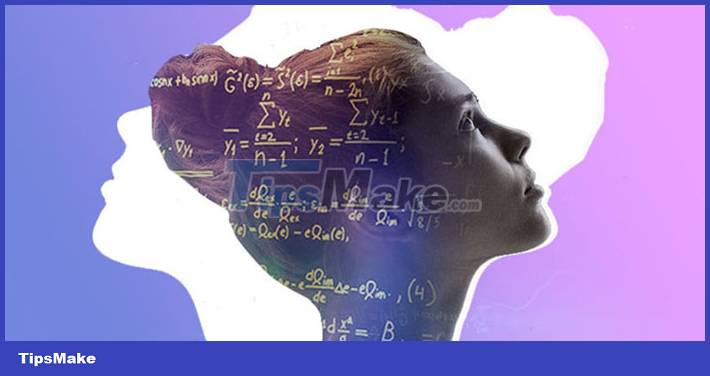AI revolution: Opportunity or challenge?
Today, the reality is that technology is advancing at an astonishing rate, as artificial intelligence (AI) has completely transformed many processes that we have become accustomed to performing automatically. There was a time when we believed that the creative side of humans was irreplaceable, because that is what truly sets humans apart from machines. Is that still true?
Some argue that artificial intelligence will destroy job opportunities, while others praise AI as a tool for humans to reach new heights. So which opinion is correct?
What is AI?

Artificial intelligence, or AI, has made the leap from the realm of science fiction to reality. However, how exactly does it work?
AI uses a combination of formulas and algorithms to build a machine that mimics human abilities (sometimes even surpasses them). It's hard to believe, but AI is present in almost every moment of our lives. Some examples of devices that use AI are facial recognition on smartphones and virtual assistants like Alexa.
If we look at it realistically, human cognitive processes do not govern AI. That's what makes it so effective at performing complex mechanical tasks, while it can fail at more abstract tasks. That holds true today.
Image and text generators: The death of creativity
Smartphones, tablets and PCs have become everyday tools, with a role similar to a canvas or paintbrush in real life. Today, digital art clearly dominates the creative mediums thanks to its diverse benefits, for example, better, faster results and improved flexibility. It is not simply that the visual arts have gained from the leap into the digital realm. Other tasks also become impossible using a computer, such as video editing, writing, or photography.
No matter how you look at it, AI has been present in our lives for the past decade or so, albeit in a supporting role. It makes everyday life easier in many ways, even if we are not aware of it. However, AI is no longer satisfied with just playing a supporting role, but is aiming to take a leading position in human life. If you join the Knowledge Engineering Institute, AI has proven that it is capable of writing its own Don Quixote.
There are other equally powerful platforms in the imaging industry, such as DALL-E, Stable-Diffussion, and Midjourney. With just a text description or prompt about what you want the image to look like, the virtual machine takes care of the rest for you. Although many results are accurate or perfect, they are an indication of what will happen in the future.
We tend to transform the reality around us with our experiences and senses. AI performs the same task through mathematics. The input data serves that function, condensing the best representation of the image as if it were an equation to create something entirely new.
Data sources for AI
This act of converting concepts and ideas into tangible objects is an activity that requires prior documentation. While creating something new from nothing is an appealing idea, it is generally not the case. The environment nurtures your mind and imagination, and many references lie within your own creativity, even if unintentional. AI works the same way, or at least similarly.
AI uses huge banks of data to learn, called machine learning. Just like an artist, artificial intelligence uses references from data provided online, using it to create images, text, and videos. Meta is developing AI to create videos as we talk.
However, there is an ethical discussion about these so-called data banks. Many artists are now seeing much of their work being used illegally in an effort to train these AI platforms.

Add to that the fact that artificial intelligence is getting better and better at creating enhanced images. Artists like David Rubin or Jon Juarez are examples of people who clearly express their opposition to this topic.
However, there are still some people who support AI. Some creators see AI as another tool that can improve artistic creativity. However, we still hear opinions that digital art is not true art or that using autotune does not mean you can sing?
Whether we want to admit it or not, AI exists. However, it is also true that AI needs to comply with laws related to intellectual property. We need better regulation of AI if we want to live harmoniously with it in the future.
You should read it
- How does Al revolution help us answer the most fundamental problems of philosophy? (Part 1)
- How does Al revolution help us answer the most fundamental problems of philosophy? (End)
- 91% of technology managers believe that AI will be the center of the next technology revolution
- Watching pictures painted by artificial intelligence, everyone thinks that is the work of a true artist
- Artificial intelligence learns to create another artificial intelligence, replacing people in the future
- What is Industry 4.0 Revolution?
- 6 steps to start learning artificial intelligence programming (AI)
- What happens if aliens are artificial intelligence?
May be interested
- How does Al revolution help us answer the most fundamental problems of philosophy? (Part 1)
 in this article, i would like to introduce you to the profound contemplation of these fundamental philosophical issues from the perspective of a leading global technology expert through the following series of articles.
in this article, i would like to introduce you to the profound contemplation of these fundamental philosophical issues from the perspective of a leading global technology expert through the following series of articles. - Google denies that challenging Momo can cause children to commit suicide on YouTube
 recently, newspapers constantly reported on the game momo challenge appearing on youtube and youtube kids causing children to commit suicide. before this information, google has officially released its feedback.
recently, newspapers constantly reported on the game momo challenge appearing on youtube and youtube kids causing children to commit suicide. before this information, google has officially released its feedback. - Web2.0 - The evolutionary era of community intelligence
 we are living in the boom of technology, booming e-commerce, exploding applications on the internet. a real revolution is happening, that revolution is called web2.0.
we are living in the boom of technology, booming e-commerce, exploding applications on the internet. a real revolution is happening, that revolution is called web2.0. - Five puzzles that challenge your wits
 below are the quizzes to find missing pictures or numbers, wrong or different shapes, both helping to train reasoning abilities and help practice agility. invite you to join the quiz to challenge yourself.
below are the quizzes to find missing pictures or numbers, wrong or different shapes, both helping to train reasoning abilities and help practice agility. invite you to join the quiz to challenge yourself. - The new Splitview Challenge is enjoying a strong response from Vietnamese stars
 recently, a new trend called #splitview #challenge has been used by many vietnamese stars and is a song that has been used by many young people in the past week.
recently, a new trend called #splitview #challenge has been used by many vietnamese stars and is a song that has been used by many young people in the past week. - Challenge yourself to be different
 don't live too safely when you yourself get fed up with old and familiar things. be brave, challenge your mind and your perseverance. dare to venture and dare to change.
don't live too safely when you yourself get fed up with old and familiar things. be brave, challenge your mind and your perseverance. dare to venture and dare to change. - Write a more professional CV with LinkedIn's new Resume Assistant feature
 cv is an opportunity for candidates to reveal their experiences and skills to get the attention of employers. however, writing a cv is a challenge, how to introduce your achievements with just a few words?
cv is an opportunity for candidates to reveal their experiences and skills to get the attention of employers. however, writing a cv is a challenge, how to introduce your achievements with just a few words? - Ultrabook made the computer revolution
 once considered a 'copy' of the macbook air, ultrabook gave users a different definition of themselves with a variety of designs and features.
once considered a 'copy' of the macbook air, ultrabook gave users a different definition of themselves with a variety of designs and features. - How does Al revolution help us answer the most fundamental problems of philosophy? (End)
 in this article, i would like to introduce you to the profound contemplation of these fundamental philosophical issues from the perspective of a leading global technology expert through the following series of articles.
in this article, i would like to introduce you to the profound contemplation of these fundamental philosophical issues from the perspective of a leading global technology expert through the following series of articles. - Challenge SAVE MONEY in 52 weeks, anyone can do it!
 do you find it difficult to save money? don't worry, apply the 52-week money saving challenge below!
do you find it difficult to save money? don't worry, apply the 52-week money saving challenge below!










 Google Chrome's reading mode will get a significant upgrade
Google Chrome's reading mode will get a significant upgrade Xiaomi confirmed the launch of HyperOS instead of MIUI on Xiaomi 14
Xiaomi confirmed the launch of HyperOS instead of MIUI on Xiaomi 14 Samsung applies for a patent for a 'smart charging ring' that can charge a smartphone's battery, drawing energy from the person themselves.
Samsung applies for a patent for a 'smart charging ring' that can charge a smartphone's battery, drawing energy from the person themselves. Inventing a smart fabric that can be wirelessly charged and washed as usual
Inventing a smart fabric that can be wirelessly charged and washed as usual Google can detect cryptocurrency mining malware without needing to install software on the user's computer
Google can detect cryptocurrency mining malware without needing to install software on the user's computer What is semi-automatic offside technology?
What is semi-automatic offside technology?